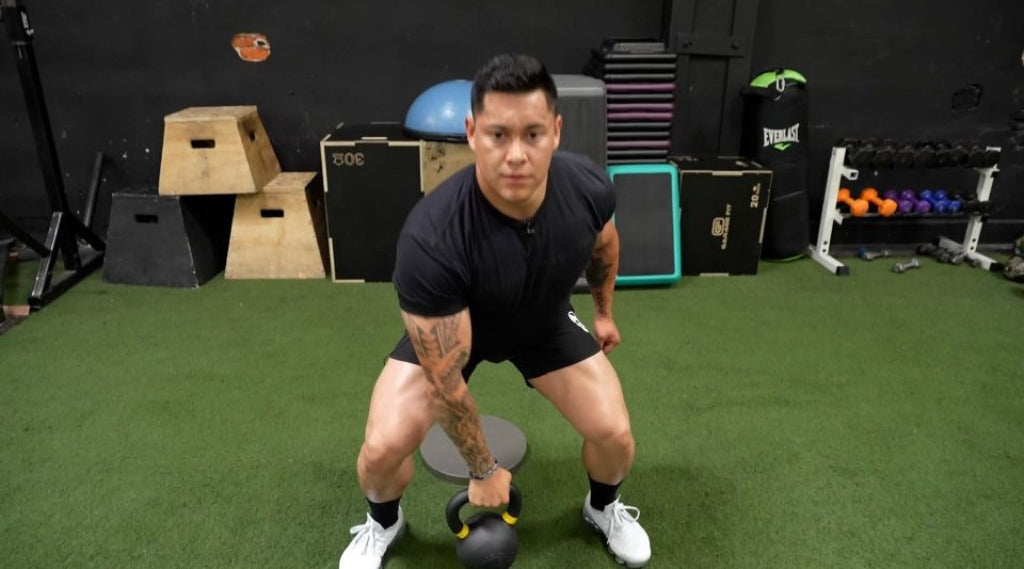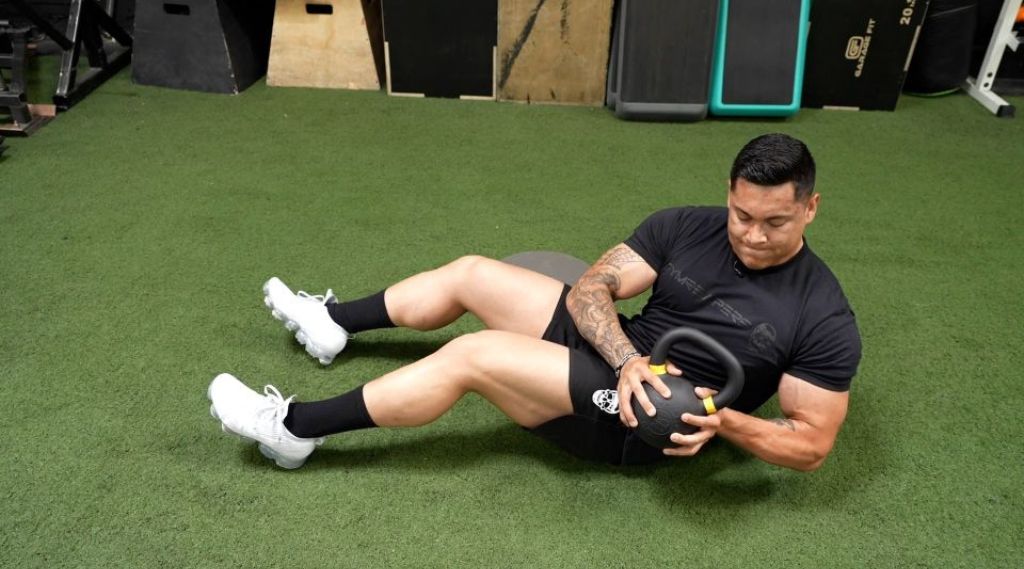The kettlebell figure 8 is an advanced exercise that challenges your coordination, strengthens multiple muscle groups, and enhances overall stability. When performed correctly, it’s a highly effective movement that targets your core, shoulders, glutes, and grip strength. However, improper form can lead to injury or reduced effectiveness, so understanding the nuances is essential.
In this article, we’ll walk through the correct technique, benefits, and common mistakes to help you get the most out of your kettlebell figure 8s.
Key Takeaways
Muscles Worked in the Kettlebell Figure 8

The kettlebell figure 8 is a dynamic movement that recruits multiple muscle groups simultaneously:
1. Core
Your abs, obliques, and lower back play a critical role in stabilizing your torso. The twisting motion of the figure 8 activates your obliques, while the isometric contraction of your abs and back keeps your spine in a neutral position, protecting you from injury.
“Kettlebell figure 8s are a core blaster that’ll have your abs, obliques, and back extensors working overtime to stabilize the trunk, rotate the torso and bend in different directions repeatedly.”
-Matthew Magnante, fitness and health writer/ACE-certified PT
2. Glutes
The glutes, especially the gluteus maximus, are activated during the hip hinge and extension phases of the movement. They provide the necessary power for the upward swing of the kettlebell.
3. Hamstrings
Located on the back of your thighs, the hamstrings work alongside the glutes to extend your hips and stabilize your lower body as the kettlebell moves through the figure 8 motion.
4. Quadriceps
The quadriceps support knee extension and stability throughout the movement. They also assist in maintaining balance and positioning as you pass the kettlebell from hand to hand.
5. Shoulders
The shoulders, also known as deltoids, are another major muscle group with a crucial role in figure 8s. The shoulders guide the kettlebell and help control its momentum, playing a crucial role in stabilizing the upper body during the figure 8.
6. Back
Your latissimus dorsi and trapezius muscles help stabilize the torso and control the weight of the kettlebell, while the erector spinae keep your spine aligned.
7. Forearms
The thicker handle of the kettlebell challenges your grip strength as you continuously pass the weight from one hand to the other.
Benefits of the Kettlebell Figure 8

1. Core Stability
The dynamic twisting motion of the kettlebell figure 8 places significant demands on your core, improving overall stability and helping to prevent injury during other movements.
2. Grip Strength
The repeated hand transitions in this exercise make it excellent for developing forearm strength, which can translate to better performance in other lifts like deadlifts and pull-ups.
3. Lower Body Strength
Your glutes, hamstrings, and quads are all engaged during the figure 8, making it a great addition to your lower body training routine.
4. Shoulder Stability
The shoulders must work hard to guide the kettlebell from side to side, improving both strength and stability in these joints.
5. Muscle Coordination
Figure 8s require multiple muscle groups to work together, improving coordination and functional movement.
6. Proprioception
Performing complex movements like the kettlebell figure 8 enhances proprioception—the awareness of your body’s position in space—leading to better overall movement control.
How to Perform the Kettlebell Figure 8
- Set Up: Stand with your feet slightly wider than hip-width apart. Hold a kettlebell in front of you with both hands.
- Squat Position: Lower into a half-squat position with your back straight and chest up. Grip the kettlebell with your right hand.
- Begin the Motion: Swing the kettlebell between your legs from the front, passing it behind your right leg. Transfer the kettlebell to your left hand.
- Complete the Figure 8: Swing the kettlebell around your left leg and back through your legs, transferring it back to your right hand. This completes one figure 8.
- Repeat: Continue alternating sides, keeping your back straight, and driving the movement from your hips, not your arms.
Pro Tip: Think of your arms as a pendulum, guiding the kettlebell but not doing the heavy lifting. The movement should come from the momentum generated by your hips.
5 Common Mistakes to Avoid
1. Rounding Your Back
Rounding your back during the exercise can strain your spine and increase injury risk.
Fix: Focus on maintaining a neutral spine throughout the movement by engaging your core and hinging at the hips.
2. Using Your Arms to Swing the Kettlebell
Relying on your arms reduces the effectiveness of the movement.
Fix: Keep your arms relaxed and let your hips generate the power for the kettlebell swing.
3. Standing Too Upright
An upright posture limits your range of motion and can lead to poor form.
Fix: Bend your knees and hinge at your hips to create space for the kettlebell to move freely between your legs.
4. Narrow Stance
A narrow stance restricts movement and can make it difficult to perform the figure 8 properly.
Fix: Stand with your feet slightly wider than hip-width apart for better balance and freedom of movement.
5. Poor Grip Control
Losing control of the kettlebell during transitions can increase the risk of injury.
Fix: Start with a lighter kettlebell and focus on firm, controlled hand transitions before moving up in weight.
Best Kettlebells For Figure 8s

For a movement like the kettlebell figure 8, you want a kettlebell with a smooth handle and a weight that allows for full control. Gymreapers kettlebells are ideal, offering a range of weights from 9 to 88 pounds with ergonomic handles that minimize friction.
Best Kettlebells For Figure 8s
The kettlebell figure 8 is a powerful exercise that targets multiple muscle groups, improves coordination, and enhances functional strength. With proper form, it’s a great addition to any strength or conditioning program. Remember to focus on technique, avoid common mistakes, and start with a manageable weight to perfect your movement.
Ready to add kettlebell figure 8s to your routine? Grab a kettlebell and get started!













Leave a comment
All comments are moderated before being published.
This site is protected by hCaptcha and the hCaptcha Privacy Policy and Terms of Service apply.